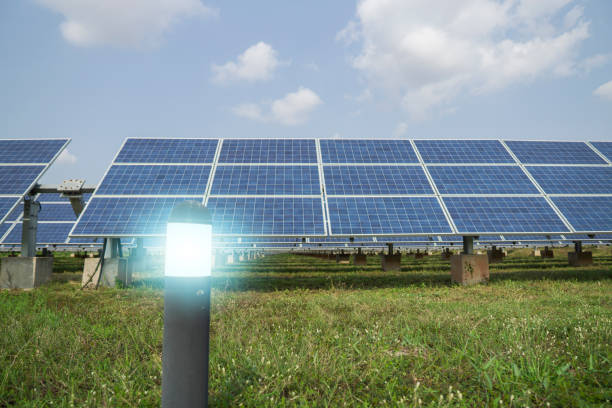
Globally, the transition to renewable energy sources is increasing demand for energy production. This is especially true in densely-populated areas with autonomous zero-energy buildings and solar carports requiring higher energy density. This increases the pressure to replace fossil-based heating and thermal vehicles.
The HYPERION Project, funded by the EU, which involves 15 partners from ten European nations, including research centers, industrial companies, solar installers, and a PV manufacturer, has created a promising solution to tackle this challenge. The project uses a combination of concentration photovoltaic, micro-tracking, and ultra-efficient space-grade solar cells to increase energy output by up to 40 percent compared to current PV solutions.
HYPERION Technology
HYPERION uses integrated optics that focus sunlight onto small areas of high-quality solar cells to increase energy conversion efficiency.
HYPERION panels reduce the active area of expensive multi-junction cells by 200x.
The micro-tracking technology in HYPERION solar panels allows sunlight to be captured from various angles. This increases efficiency.
HYPERION panels are designed to capture more light during cloudy conditions and generate continuous power.
HYPERION panels are hybrid designs that use a PCB made of glass to serve as the front glass for a solar panel. It also transmits wasted light from primary cells.
HYPERION technology combines both the advantages of conventional and concentrated solar panels. This results in higher energy efficiency and more cost-effective production.
Production
The standard module architecture of HIPERION panels has been modified to include a transparent circuit board instead of the front glass.
You can find cells with multiple junctions (MJ) on the backplane.
The front panel is made up of lens arrays and produced using a validated and specially designed system.
The two planes are joined by guiding elements, ensuring the distance between lenses and cells is maintained for all sun positions.
Power Ratings of Hybrid Modules
The power rating for hybrid modules such as the HYPERION technology presents a problem, as they convert diffuse and direct light differently. Existing IEC standards don’t provide guidelines in this regard. The HYPERION solar panel project has developed a flasher to generate controlled or collimated diffuse light in a predefined sequence. The flasher can configure the module with perfect alignment of lenses and MJ cell and then proceed to power evaluation in direct sunlight or switch to secondary cells power rating in diffuse light. The module power can be defined as the total of both contributions with restrictions on natural and diffuse light, corresponding to global irradiances of 1000 W/m 2.
The Potential for HYPERION Solar Panel Technology
HYPERION was a project that aimed to show the industrial relevance and application of hybrid technology at the level of a pilot line. The modules were merely laboratory concepts before the project started. Today, hundreds of modules are being produced with custom-made industrial tools and sent to pilot sites worldwide, including Germany. Spain, Portugal. Chile and Switzerland. These pilot sites have different climatic and weather conditions. These sites’ data will give us insights into where hybrid technology will be most valuable. The project aims to understand better the potential of hybrid technology in different environments and locations and inform future deployment and development strategies.
Ornate Solar
Ornate Solar has been in the solar industry for over eight years. We have partnered with the world’s best solar brands to bring you affordable and reliable solar products, including solar panels, inverters, and accessories.
We also developed India’s first Integrated InRoof System. The Ornate InRoof has a leak-proof and aesthetically pleasing solar panel roof.
